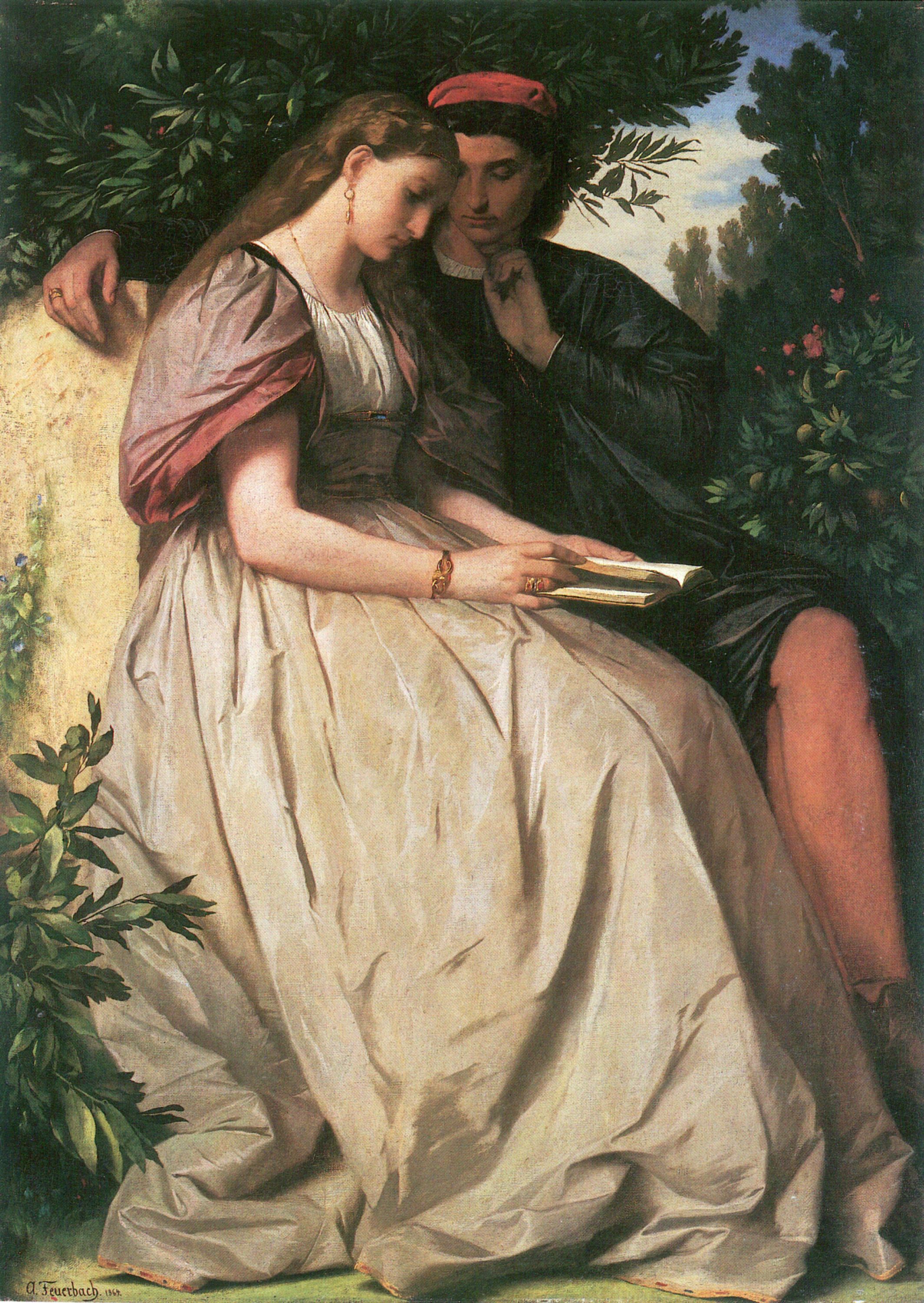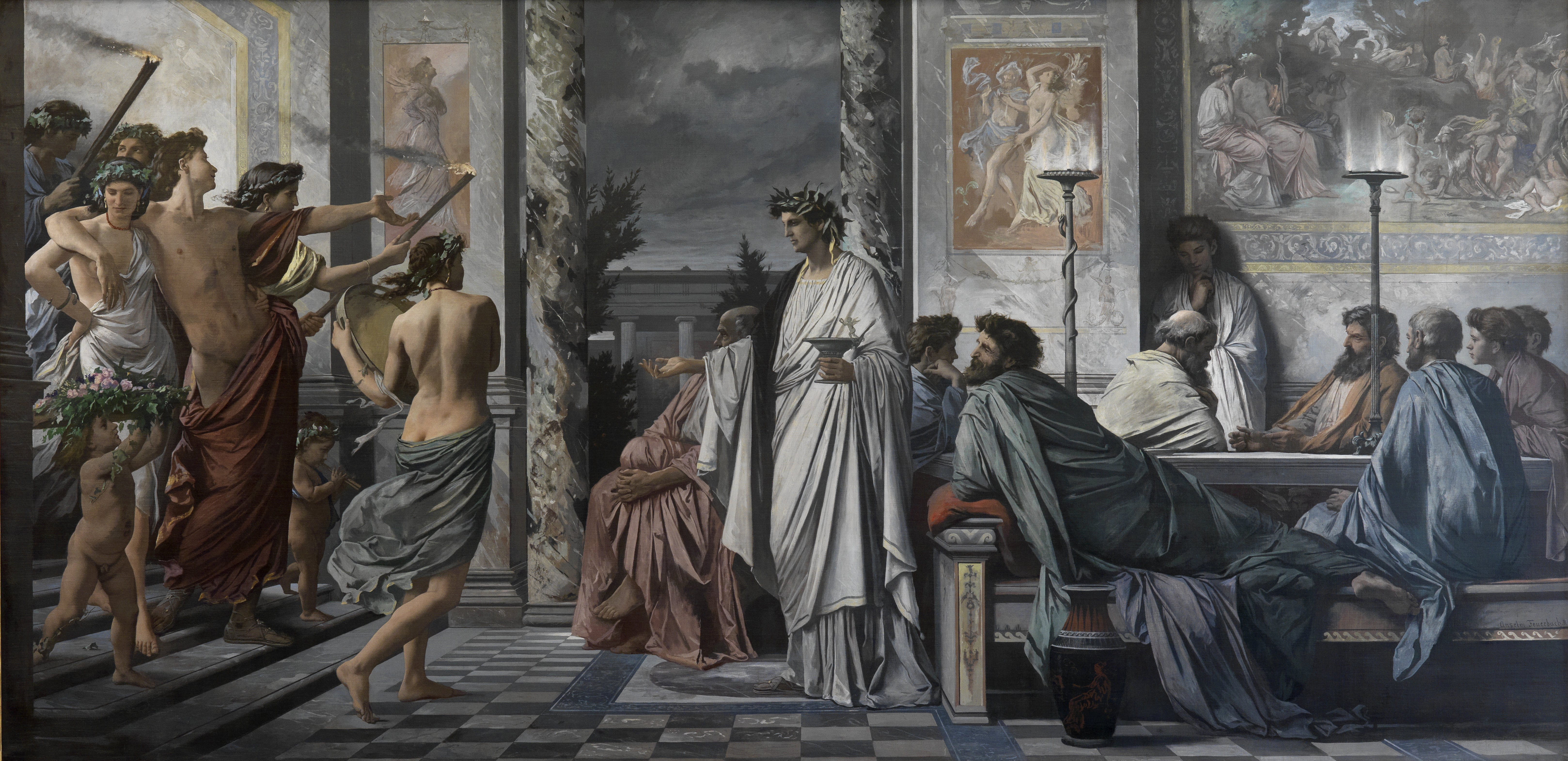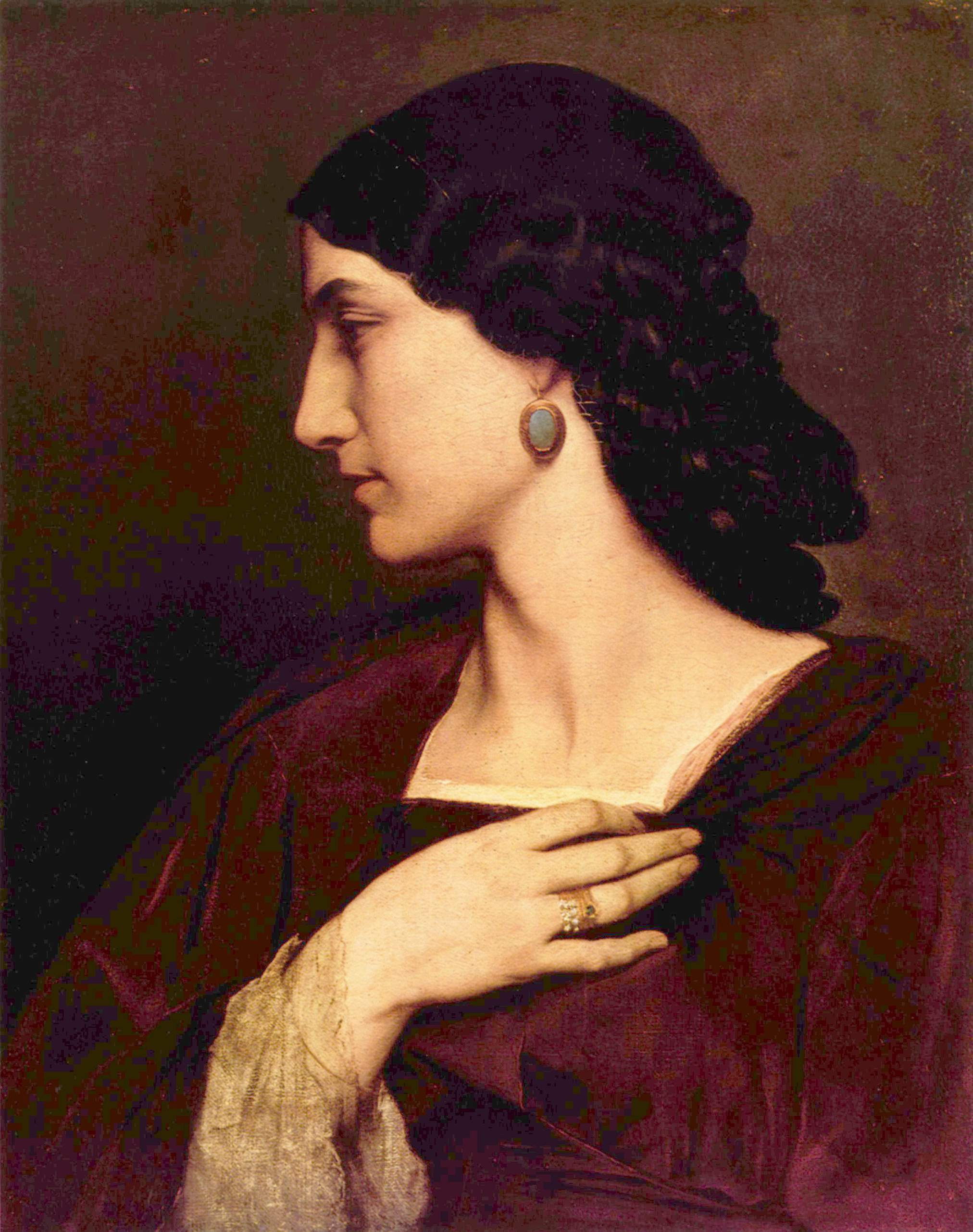painter
Painting is the practice of applying paint, pigment, color or other medium to a solid surface (called the "matrix" or "support"). The medium is commonly applied to the base with a brush, but other implements, such as knives, sponges, and ...
. He was the leading classicist painter of the German 19th-century school.
Biography
Early life


 Feuerbach was born at
Feuerbach was born at Speyer
Speyer (, older spelling ''Speier'', French: ''Spire,'' historical English: ''Spires''; pfl, Schbaija) is a city in Rhineland-Palatinate in Germany with approximately 50,000 inhabitants. Located on the left bank of the river Rhine, Speyer li ...
, the son of the archaeologist Joseph Anselm Feuerbach and the grandson of the legal scholar Paul Johann Anselm Ritter von Feuerbach
Paul Johann Anselm Ritter von Feuerbach (14 November 177529 May 1833) was a German legal scholar. His major achievement was a reform of the Bavarian penal code which led to the abolition of torture and became a model for several other countries. ...
. The house of his birth is now a small museum.
Between 1845 and 1848 he attended the Düsseldorf Academy
Düsseldorf ( , , ; often in English sources; Low Franconian and Ripuarian: ''Düsseldörp'' ; archaic nl, Dusseldorp ) is the capital city of North Rhine-Westphalia, the most populous state of Germany. It is the second-largest city in th ...
, where he was taught by Johann Wilhelm Schirmer, Wilhelm von Schadow, and Carl Sohn. He went on to the Munich Academy, but in 1850, along with a number of other dissatisfied students, he moved to the academy at Antwerp, where he studied under Gustav Wappers. Feuerbach moved to Paris in 1851, where he was a pupil of Thomas Couture until 1854.Artist biography in ''German Masters of the Nineteenth Century'', p.268 It was in Paris that he produced his first masterpiece, ''Hafiz at the Fountain'' (1852).
In 1854, funded by Grand Duke Friedrich of Baden he visited Venice
Venice ( ; it, Venezia ; vec, Venesia or ) is a city in northeastern Italy and the capital of the Veneto region. It is built on a group of 118 small islands that are separated by canals and linked by over 400 bridges. The isla ...
, where he fell under the spell of the greatest school of colourists, several of his works demonstrating a close study of the Italian masters. From there he continued to Florence
Florence ( ; it, Firenze ) is a city in Central Italy and the capital city of the Tuscany region. It is the most populated city in Tuscany, with 383,083 inhabitants in 2016, and over 1,520,000 in its metropolitan area.Bilancio demografico ...
and then to Rome. He remained in Rome until 1873, making brief visits back to Germany. In 1861 he met Anna Risi (known as "Nanna"), who sat as his model for the next four years. In 1866 she was succeeded as his principal model by Lucia Brunacci, an innkeeper's wife who posed for his pictures of Medea
In Greek mythology
A major branch of classical mythology, Greek mythology is the body of myths originally told by the ancient Greeks, and a genre of Ancient Greek folklore. These stories concern the origin and nature of the world, the ...
. In 1862 Feuerbach met Count Adolf Friedrich von Schack, who commissioned copies of Italian old masters from him. The count introduced him to Arnold Böcklin
Arnold Böcklin (16 October 182716 January 1901) was a Swiss symbolist painter.
Biography
He was born in Basel. His father, Christian Frederick Böcklin (b. 1802), was descended from an old family of Schaffhausen, and engaged in the silk trad ...
and Hans von Marées. The three artists became known as the ''Deutschrömer'' ("German Romans") because of their preference for Italian over German art.
Between 1869 and 1874 he painted two versions of Plato's Symposium
The ''Symposium'' ( grc, Συμπόσιον, ) is a philosophical text by Plato, dated . It depicts a friendly contest of extemporaneous speeches given by a group of notable men attending a banquet. The men include the philosopher Socrates, the ...
.
In 1873 Feuerbach moved to Vienna
en, Viennese
, iso_code = AT-9
, registration_plate = W
, postal_code_type = Postal code
, postal_code =
, timezone = CET
, utc_offset = +1
, timezone_DST ...
, having been appointed professor of history painting at the Academy
An academy (Attic Greek: Ἀκαδήμεια; Koine Greek Ἀκαδημία) is an institution of secondary or tertiary higher learning (and generally also research or honorary membership). The name traces back to Plato's school of philosop ...
. Among his students were Ludwig Deutsch
Ludwig Deutsch (13 May 1855 – 9 April 1935) was a French painter of Austrian origin, who settled in Paris and became a noted Orientalist artist. Having studied at the Vienna Academy of Fine Arts from 1872 to 1875, he moved to Paris in 1878, wh ...
, Rudolf Ernst
Rudolf Ernst (14 February 1854, Vienna – 1932, Fontenay-aux-Roses) was an Austro-French painter, printmaker and ceramics painter who is best known for his orientalist motifs. He exhibited in Paris under the name "Rodolphe Ernst".
Life
He ...
and Jean Discart
Jean Baptiste Discart (5 October 1855, Modena – 1 January 1940, Paris) was an Italian-born painter; known primarily for his portraits and Orientalist scenes. He worked mainly in France and the Netherlands, and came to be identified as French.
...
. Later, Feuerbach developed a disagreement with architect Theophil Hansen
Baron Theophil Edvard von Hansen (; original Danish language, Danish name: Theophilus Hansen ; 13 July 1813 – 17 February 1891) was a Denmark, Danish architect who later became an Austrian Empire, Austrian citizen. He became particularly well ...
over his ceiling mural ''The Fall of the Titans'', painted for the Great Hall of the new Academy building on the Ringstrasse. While in Vienna he came to know Johannes Brahms. Brahms later dedicated a composition to Feuerbach, Nänie.
Last years
 In 1877 he resigned from his post at the Vienna Academy and moved to Venice, where he died in 1880. Brahms composed '' Nänie'', a piece for chorus and orchestra, in his memory.
Following his death, his step-mother Henriette, to whom he had always been close, and who had always done much to promote his career, wrote a book entitled ''Ein Vermächtnis'' ("A Testament" or "A Legacy"), including his letters and autobiographical notes. It proved enormously successful and greatly enhanced his posthumous reputation.Schiff, Gert, "An Epoch of longing" in ''German Masters of the Nineteenth Century'', pp.24–7
According to the 1911 ''Encyclopædia Britannica'':
In 1877 he resigned from his post at the Vienna Academy and moved to Venice, where he died in 1880. Brahms composed '' Nänie'', a piece for chorus and orchestra, in his memory.
Following his death, his step-mother Henriette, to whom he had always been close, and who had always done much to promote his career, wrote a book entitled ''Ein Vermächtnis'' ("A Testament" or "A Legacy"), including his letters and autobiographical notes. It proved enormously successful and greatly enhanced his posthumous reputation.Schiff, Gert, "An Epoch of longing" in ''German Masters of the Nineteenth Century'', pp.24–7
According to the 1911 ''Encyclopædia Britannica'':
He was steeped in classic knowledge, and his figure compositions have the statuesque dignity and simplicity ofHis works are housed at leading public galleries in Germany. Stuttgart has the second version of ''Iphigenia''; Karlsruhe, the ''Dante at Ravenna''; Munich, the ''Medea''; and Berlin, ''The Concert'', his last important painting. Other major works include ''The Battle of the Amazons'', ''Pietà'', '' The Symposium of Plato'', ''Orpheus and Eurydice'' and ''Ariosto in the Park of Ferrara''.Greek Greek may refer to: Greece Anything of, from, or related to Greece, a country in Southern Europe: *Greeks, an ethnic group. *Greek language, a branch of the Indo-European language family. **Proto-Greek language, the assumed last common ancestor ...art. He was the first to realize the danger arising from contempt of technique, that mastery of craftsmanship was needed to express even the loftiest ideas, and that an ill-drawn coloured cartoon can never be the supreme achievement in art.''Encyclopædia Britannica'', 1911
See also
*List of German painters
This is a list of German painters.
A
> second column was into info box -->
* Hans von Aachen (1552–1615)
* Aatifi (born 1965)
* Karl Abt (1899–1985)
* Tomma Abts (born 1967)
* Andreas Achenbach (1815–1910)
* Oswald Achenbach (182 ...
References
Sources
* *External links
Links to works
''German masters of the nineteenth century: paintings and drawings from the Federal Republic of Germany''
a full text exhibition catalog from The Metropolitan Museum of Art, which contains material on Anselm Feuerbach (no. 25-28) {{DEFAULTSORT:Feuerbach, Anselm 1829 births 1880 deaths German neoclassical painters 19th-century German painters German male painters People from Speyer People from the Palatinate (region) Orientalist painters Academics of the Academy of Fine Arts Vienna Kunstakademie Düsseldorf alumni 19th-century German male artists